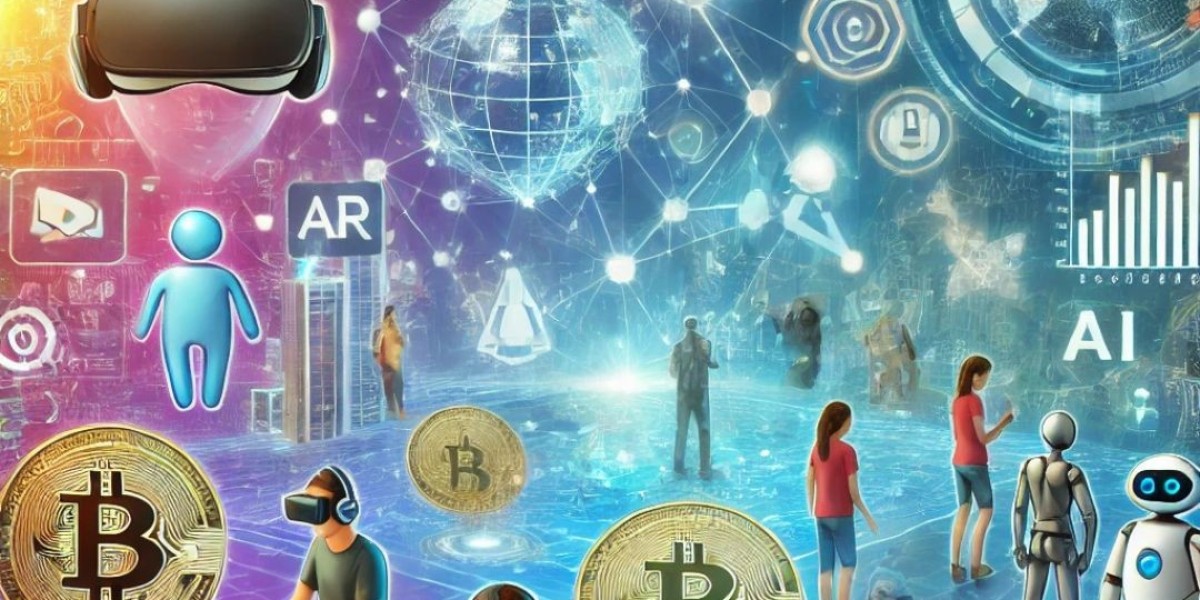As the metaverse continues to evolve, it is becoming increasingly clear that several technologies are at the heart of this virtual revolution. The metaverse development service sector is expanding rapidly, integrating various technologies like virtual reality (VR), augmented reality (AR), blockchain, and artificial intelligence (AI) to build immersive digital spaces. But among these, which technology is expected to dominate? In this article, we’ll explore the core technologies driving the metaverse and assess which one is likely to take the lead.
Core Technologies Shaping the Metaverse
The success of the metaverse will rely on a combination of cutting-edge technologies. Each technology brings its unique strengths, but their integration is key to delivering a cohesive virtual world.
1. Virtual Reality (VR): The Immersive Portal
Virtual reality is one of the most recognized technologies when discussing the metaverse. It allows users to step into fully immersive environments, creating opportunities for virtual experiences in gaming, socializing, and even business. Companies like Meta, HTC, and Valve have made significant investments in VR to push the boundaries of what is possible in virtual environments.
However, VR faces a critical challenge in its accessibility. Specialized hardware, such as headsets and controllers, is required to experience VR, which may limit its mass adoption. While VR offers a transformative way to experience the metaverse, its growth may be restricted by the cost and practicality of its equipment.
2. Augmented Reality (AR): Blending Reality and Virtuality
In contrast to VR, augmented reality (AR) blends the virtual world with the real world by overlaying digital elements on physical environments. AR is becoming increasingly popular due to its accessibility through everyday devices such as smartphones and tablets. With tech giants like Apple and Google investing heavily in AR technology, it is likely to play a central role in metaverse development.
AR’s potential lies in its ability to seamlessly integrate into daily life, whether through virtual shopping experiences, interactive games, or enhanced learning environments. Its widespread accessibility makes it a strong contender for dominance in the metaverse, particularly in consumer-facing sectors.
3. Blockchain: Securing the Digital Economy
One of the most critical technologies underpinning the metaverse is blockchain. It provides a secure and decentralized way to manage digital assets, ensuring ownership, transparency, and the ability to trade virtual goods. Blockchain technology is expected to drive the economy within the metaverse, powering everything from non-fungible tokens (NFTs) to virtual real estate.
Blockchain’s decentralized nature allows users to have complete ownership of their assets without relying on a centralized authority. This has made blockchain the backbone of many virtual worlds, ensuring secure and transparent transactions within the metaverse.
4. Artificial Intelligence (AI): Enhancing Virtual Interactions
Artificial intelligence (AI) plays a pivotal role in enhancing user interactions and automating processes within the metaverse. From creating intelligent virtual agents to generating realistic environments, AI is fundamental in making the metaverse a dynamic and interactive space.
AI also helps in personalizing user experiences, tailoring virtual environments, and avatars to individual preferences. As the demand for more immersive and intelligent virtual spaces grows, AI’s importance in the metaverse will continue to rise.
The Leading Technology: AR and Blockchain in Focus
While multiple technologies contribute to the development of the metaverse, augmented reality (AR) and blockchain stand out as potential leaders. AR’s accessibility and integration into daily life make it a strong candidate for consumer-facing applications. As AR technology becomes more advanced, its ability to merge the virtual and real worlds will make it indispensable in sectors like retail, education, and entertainment.
At the same time, blockchain is expected to dominate the economic backbone of the metaverse. Its decentralized nature ensures that users have secure ownership and control over their virtual assets, making it crucial for the growth of virtual economies. As virtual worlds expand, blockchain will remain a fundamental technology for powering financial transactions within these environments.
Conclusion
The future of the metaverse will be shaped by a convergence of technologies, each contributing to different aspects of the virtual experience. Augmented reality and blockchain are poised to be the most dominant, with AR leading the way in consumer interactions and blockchain securing the metaverse’s economic framework. As these technologies evolve, they will redefine how we engage with digital worlds and open new opportunities for businesses and individuals alike.








